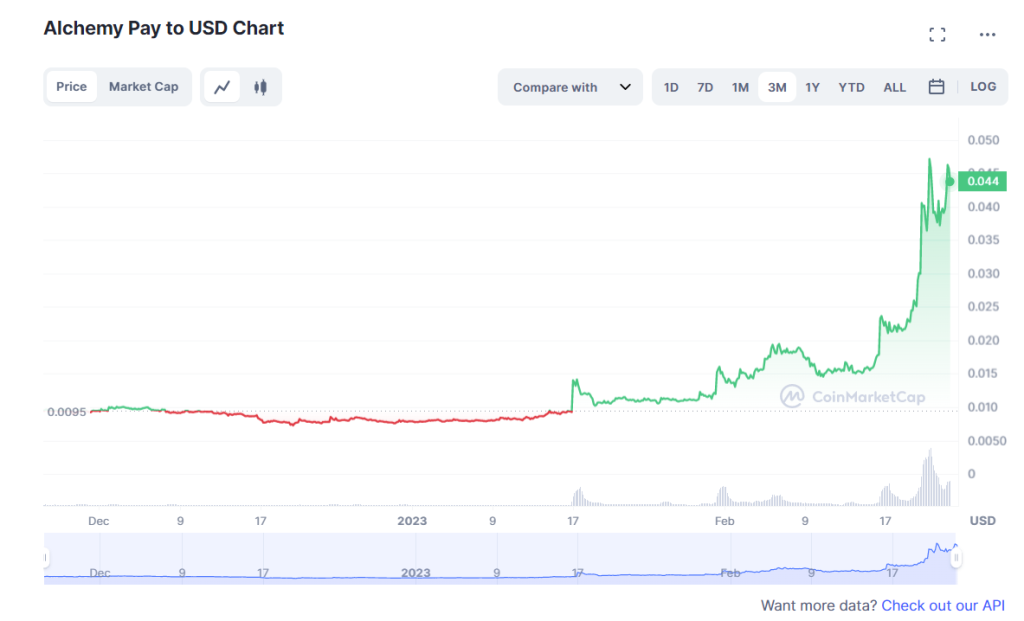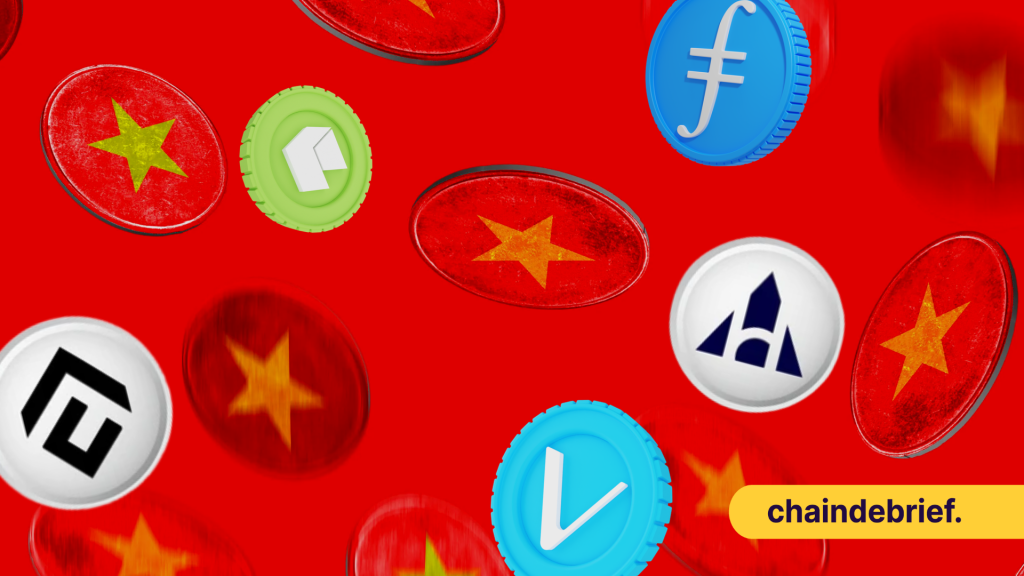Given the latest USD 92 billion liquidity injection by the People’s Bank of China (PBOC), Crypto Twitter (CT) is abuzz with calls for a Chinese money-led bull run. Today, we look into the top 5 Chinese crypto projects with massive potential in 2023.
The Chinese central bank injected $92bn USD into the market on Friday!
— tedtalksmacro (@tedtalksmacro) February 19, 2023
This easily outpaces the Fed’s current QT. pic.twitter.com/u3KicIcwv0
The timing of Hong Kong’s regulatory overhaul and shift towards a more pro-crypto stance is no coincidence. It is inconceivable for Hong Kong to embark on this path without the blessing of the Chinese Central Government. Hong Kong is China’s experimental ground for crypto development, and it will pave the way for an end to the crypto ban in China and, thus, greater crypto adoption on the Mainland.
My working thesis atm is that the next bull run is going to start in the East. It will be a humbling reminder that crypto is a global asset class and that the West, really the US, always only ever had two options: embrace it or be left behind. It can't be stopped. That we know.
— Cameron Winklevoss (@cameron) February 19, 2023
Also Read: How China Will Trigger The Next Crypto Bull Run
Guanxi, or the importance of relationship building, cannot be overstated in Chinese society, and the crypto industry is no exception. Chinese crypto project founders with the right connections can better position themselves and gain a larger share of the pie.
1. NEO or Antshares (Chinese Ethereum L1)
Formerly Antshares, NEO is Layer 1 blockchain, also known as the “Ethereum of China”, which seeks to digitize assets and become an open network for the Smart Economy.
Like Ethereum, NEO provides platforms designed to develop dApps and smart contracts. NEO was founded in 2014 by Da Hongfei and Erick Zhang, Hongfei is a noted luminary who has played an instrumental role in China’s blockchain development.
Besides partnering with the Blockchain-based Services Network (BSN), NEO has worked alongside the Chinese State Information Center, China UnionPay and China Mobile to accelerate mass blockchain adoption in China.
The NEO ecosystem has two tokens, $NEO is a governance token that confers users voting rights, while users use $GAS to pay transaction fees. There are 100 million NEO tokens, of which 70.5 million are in circulation. $NEO has rallied 113% YTD.

2. Conflux ($CFX)
The Conflux Network, also known as the Shanghai Tree-Graph Blockchain Research Institute, is currently the only public, permissionless and regulatory-compliant blockchain in China. Founded in 2018, Conflux is a Layer 1 EVM-compatible blockchain that operates on a hybrid PoW/PoS mechanism.
Dr Fan Long and his team have secured notable partnerships, including China’s version of Instagram, Xiaohongshu and China Telecom. To better appreciate the addressable market, Xiaohongshu is a lifestyle content platform with over 200 million monthly active users.
In comparison, China Telecom is China’s second-largest wireless carrier, with more than 390 million users. Token holders can use $CFX to pay transaction fees, earn rewards through staking and participate in network governance. There are approximately 5 billion $CFX tokens, of which slightly over 2 billion are in circulation.
1/ World class business dev
— jay (@0xjaypeg) February 18, 2023
This one speaks for itself
If you've been paying attention in the past month you'd know Conflux has partnerships w/
– Chinese / Hong Kong government
– China Telecom (sim card w/ hardware wallet)
– Little Redbook (Chinese instagram w/ 200M+ DAU) pic.twitter.com/mgNkWotwuk
40% of the tokens were allocated to the Ecological fund, 36% to the founding team and seed investors, 16% to private investors and foundation reserves and the remaining 8% to the community fund. Acting on feedback that the core team has received, the CTO has decided to go ahead with a burning proposal to make the token less inflationary.

$CFX has rallied a whopping 1,168% YTD. The thread below will also help you onboard the Conflux network and the necessary tools to navigate the space.
1/ Short thread on how to onboard to @Conflux_Network, the main blockchain of @xiaohongshu (China's Instagram) and the relevant tools you will need to navigate the space: pic.twitter.com/xwQATTRtTU
— Ash (@ahboyash) February 20, 2023
3. VeChain ($VET)
VeChain is a proof-of-authority (POA) Layer 1 blockchain designed for enterprise-level businesses to manage their supply chain operations better and track goods flow from the manufacturer to the end consumer.
#VECHAIN Review By @Web3Reviews
— Web3Reviews (@Web3Reviews) June 27, 2022
Review Score: 9.0 | 10$VET Is The World's Leading Blockchain Application Platform Driven by Enterprise Adoption.
• #VET Has A Simple to Use Blockchain Platform
• Vechain Has Proven Expertise Across a Variety of Industries.
Thread 🧵👇 pic.twitter.com/CKbvLiJ77R
Following food safety incidents in China, VeChain indeed has a strong value proposition in enabling the authentication and verification of the origin of products through the use of unique IDs stored on the blockchain.
Consumers can independently verify the source of the products they purchase and feel more assured. VeChain was founded in 2015 by the ex-Chief Information Officer of global luxury brand Louis Vuitton Sunny Lu, and Binance founder Chao Zhanpeng (better known as CZ).
VeChain currently has partnerships with multinational hypermarket chain Walmart China and multinational fast-fashion clothing company H&M among others, including the Chinese Government. They are also seeking to expand the scope of their potential clientele to include agriculture, automotive and fashion enterprises.
VeChain also employs a two-token system, VET, the primary token is used for staking and transactions on the VeChain network and a secondary token, VTHO used to earn rewards and pay network fees. The VeChain Foundation distributed approximately 133 million tokens to the community via private snake, public sales, promotions and marketing campaigns, accounting for more than 70% of the VET (including burnt tokens). $VET has rallied 78% YTD.

4. Alchemy Pay ($ACH)
Alchemy Pay, founded in Singapore in 2018, has a credible business model that seeks to bridge the real world with Web 3 with a fiat onramp/offramp and payments platform. Beyond partners in the crypto space such as Binance and Polygon, notable global partners include Visa, giant e-Commerce platform Shopify, popular social media application LINE and even large international banks such as HSBC Bank.
I am incredible bullish on $ACH #AlchemyPay
— | Cryptozero 🕳 |ape® (@Cryptoherooo) February 20, 2023
Chinese project & payment partnership with #Binance pic.twitter.com/YWsjDGgwQx
The Chinese founders’ Molly Zheng and Shawn Shi are veterans with decades of working experience in the financial and payments industry. Molly held senior positions in PayPal China, HSBC China and Mastercard China. Shawn previously held executive positions at multiple publicly listed companies and is a partner at reputable investment funds.
Alchemy Paywillo received its Hong Kong Monetary Service Operator License in Q1 2023. It is also on track to secure its Virtual Asset Service Provider license in Hong Kong. Besides being able to pay transaction fees in $ACH and serve as ecosystem rewards, an exciting use case for $ACH includes enabling enterprise customers to stake and access services.
$ACH has a maximum total supply of 10 billion tokens, 40% of which is allocated to Enterprise and Consumer transaction rewards, 38% given to stakeholders, with the team receiving 18% of the tokens, 11% for DeFi transaction rewards and the remaining 11% reserved to expedite timely transfers and incentivize early enterprise partners to drive use cases. $ACH has rallied 418% YTD.

5. Filecoin ($FIL)
Created in 2017 by Protocol Labs, Filecoin is a decentralized and open-source platform built on an InterPlanetary File System (IPFS). Filecoin operates on a peer-to-peer network of data storage providers who offer their spare storage capacity to store files on behalf of clients.
The users can access their encrypted files at any time securely and will only have to pay for storage space that they utilize in Filecoin tokens. Although Filecoin does not have Chinese founders, it was massively popular among the Chinese, and most miners used to be based in China.
$FIL becoming deflationary post FVM would be one of the most impressive turnarounds for a token
— Jason Choi (@mrjasonchoi) February 19, 2023
The imminent Filecoin Virtual Machine (FVM) launch rendering the Filecoin network to become a full-fledged L1 blockchain, is slated to introduce smart contract capabilities and bring about fundamental changes such as file access controls, automation of deals to store files and enabling data-oriented DAOs.
The use cases for $FIL include using it to pay for transaction fees, collateral for service provision and payment, and block rewards. There are currently approximately 391 million $FIL tokens. More storage translates into more $FIL locked, and a higher number of transactions will mean more $FIL burnt. As a result, $FIL could potentially become deflationary. $FIL has rallied 149% YTD.

Closing thoughts
I am inclined to believe that China is still at the cusp of embracing crypto. Allowing retail investors in Hong Kong to trade major digital tokens like BTC and ETH is a major step forward.
As China reopens and with record cash injection into the economy to provide ample liquidity to support a sustained post-pandemic economic recovery, it is no surprise that the Chinese coins narrative continues to gain popularity as some of this liquidity is bound to find its way into crypto.
Hong Kong is China’s test bed for all things crypto, and its success will prove crucial for China to take the next step in lifting the crypto ban for investors on the Mainland.
[Editor’s Note: This article does not represent financial advice. Please do your research before investing.]
This article is done by our freelance writer, Clarence Lee
Featured Image Credit: Chain Debrief



































